The acoustic and the electric guitar are the two that stick out the most. A lot of people select these guitars, whether they are new to playing or have been playing for years. Starting with an acoustic guitar. I love how it felt to play and how warm the sound was.
I learned to play the electric guitar over time. I wanted to try different songs and sounds. It was exciting to see what the electric guitar could do.
But my acoustic guitar is always with me. Let me now explain the differences between acoustic and electric guitars. Even though they seem same, they have separate fields in music. Today’s article will show you what makes each one unique.
The History of Accoustic and Electric Guitar
The guitar has been around for hundreds of years, but its roots go back to ancient stringed instruments. The first acoustic guitars were made in the early 1600s. The electric guitar, on the other hand, was invented in the 1900s.
Acoustic Guitar: Where It All Began
Older instruments than the guitar, like the lute and the vihuela, were prominent in the Middle Ages and Renaissance. Thanks to artists like Antonio de Torres, the modern classical guitar with six strings came into being in the 1800s.
The acoustic guitar has changed over time to meet the needs of players who want a bigger and better sound. It became beloved in many types of music, from folk and blues to classical and flamenco.
The acoustic guitar is often thought of as the more “classic” music instrument. It was the first one made, and it’s still one of the most important ways to teach people how to play the guitar.
The Latecomer: The Electric Guitar
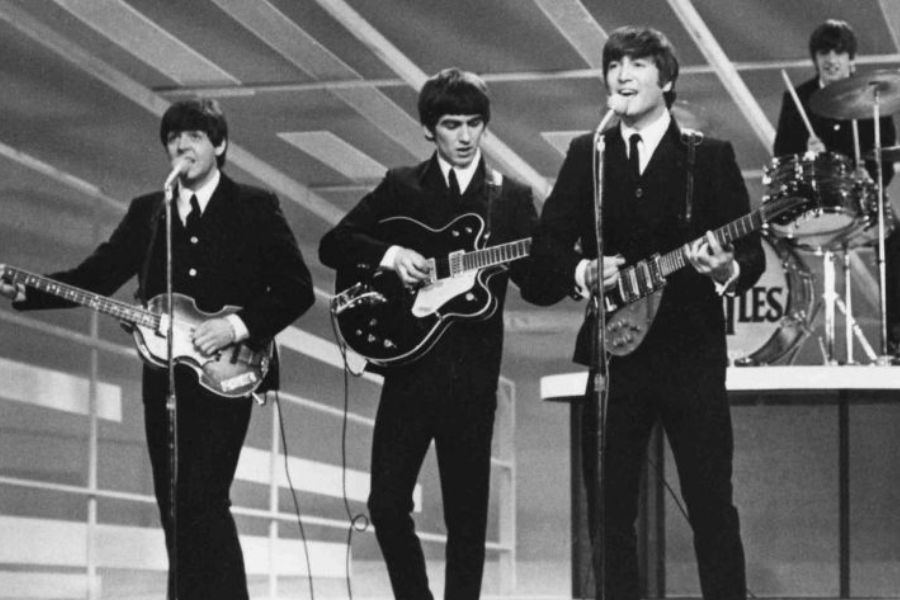
To make sound louder in big bands, people came up with the electric guitar in the 1930s. At first, it was an acoustic guitar with electromagnetic tuners.
It became more acclaimed during the 1950s and 1960s, when rock ‘n’ roll and blues music were still new. Les Paul and Leo Fender were two of the pioneers who helped make the solid-body electric guitar practical.
The electric guitar changed the way we played and made music in a huge way. It became linked to music styles like rock, metal, and jazz, which changed the way current music is made.
How Different Is Electric Guitar From Acoustic?
Electric vs. Acoustic: What’s Common?
Acoustic and electric guitars feature bodies, necks, headstocks, tuning pegs, frets, and strings. This makes playing them pretty similar for me. You hold, build chords, and strum or pick both guitars in the same manner.
Most of your playing styles, such tapping or fingerpicking, work on both guitars. One trick may work better than the other, but mastering one will reinforce you with both.
Both sorts of guitars need tuning and maintenance. Both deal with replacing strings on a regular basis to sound well.
You can play any song with either guitar. Many guitartists employ both for many kinds of tones.
That’s why, whether you like electric or acoustic guitars, they’re pretty much similar. There are lots of skills you can share and music styles you can play.
A lot of the time, my acoustic and electric guitars sound great together. There’s no right or wrong answer, you can have both, not like when you have to decide to pick between an iPhone and a Samsung phone.
So instead than arguing over which guitar is greatest, you should focus on its vitality and uniqueness.
How Are They Different?
I often find myself comparing acoustic and electric guitars because they each bring something special to the music we love. Each one has its own vibe, fitting different genres, and ways to play.
Here’s something I’ve learned about making music: the way a guitar is made – every part of it – really shapes the sound it gives off. So, let’s tackle how the design of both acoustic and electric guitars influences their unique sounds.
Construction and Design
Body Types
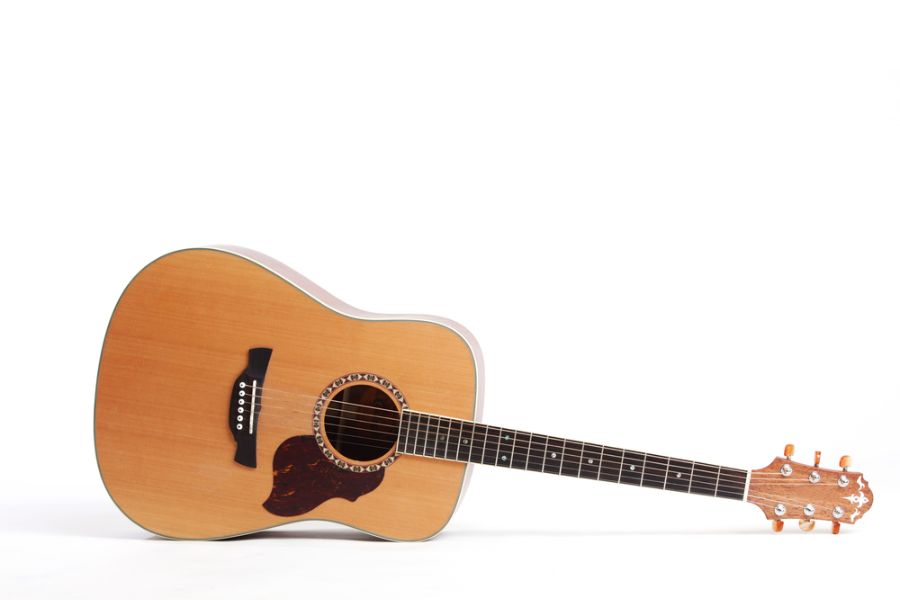
Acoustic Guitar
When I pick up my acoustic guitar, its hollow body is not just part of its frame; it’s the heart of its sound. The size and shape of the body, plus where the soundhole sits, all change the tone, volume, and how the acoustic guitar echoes. This resonant chamber sustains the vibrations of the strings. It’s powerful enough to fill a room without any electronic aid.
Electric Guitar
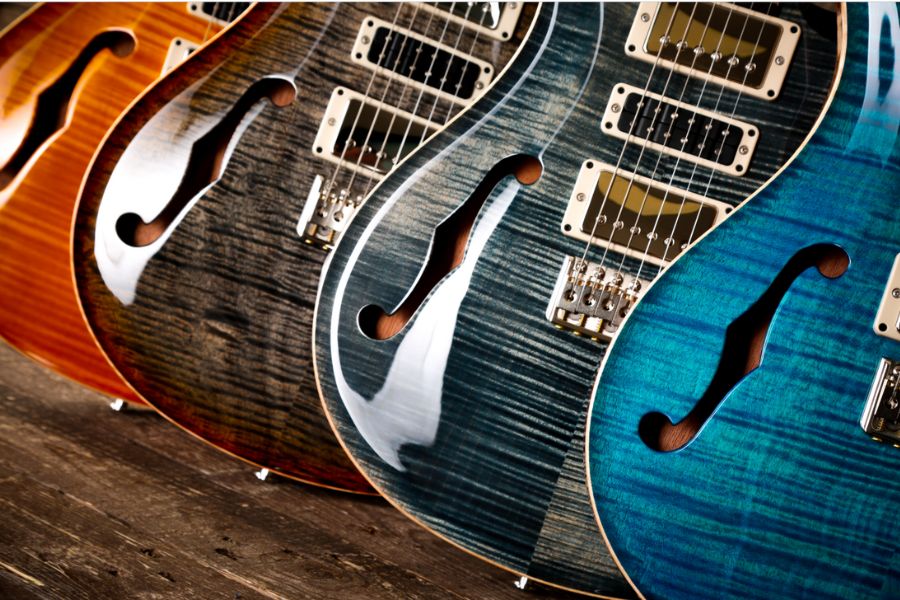
Now, when I switch to my electric guitar, things are a bit different. It usually has a solid or semi-hollow body. These types aren’t about making the sound louder by themselves. Instead, they’re about keeping feedback under control and affect how long my notes linger. The solid body helps me ward off unwanted noise, which is great when I’m playing with electronic effects and amps. Semi-hollow guitars are a neat middle ground. They hold onto some acoustic features but also work well with electric amplification.
The soundhole on my acoustic guitar lets the sound waves from the strings move forward, naturally boosting the volume. Electric guitars, though, have pickups. These pickups catch the vibrations from my strings and turn them into electric signals. Then, these signals get loud and clear through an amp. With this key difference in sound projection, my electric guitar lets me play around with sound in ways my acoustic guitar just can’t.
Materials
The wood of our guitars changes how they sound. My acoustic guitar has a spruce top that makes its tone bright and mahogany back and sides that add a softer touch. For balance, our electric guitars might be made of alder, and for depth plus durability, mahogany is a great choice.
String
Acoustic Guitar
The strings I choose for my acoustic guitar really shape its sound. Nylon strings, which I use on classical guitars, give off a softer, mellower vibe. Steel strings, on the other hand, make things brighter and more resonant.
Electric Guitar
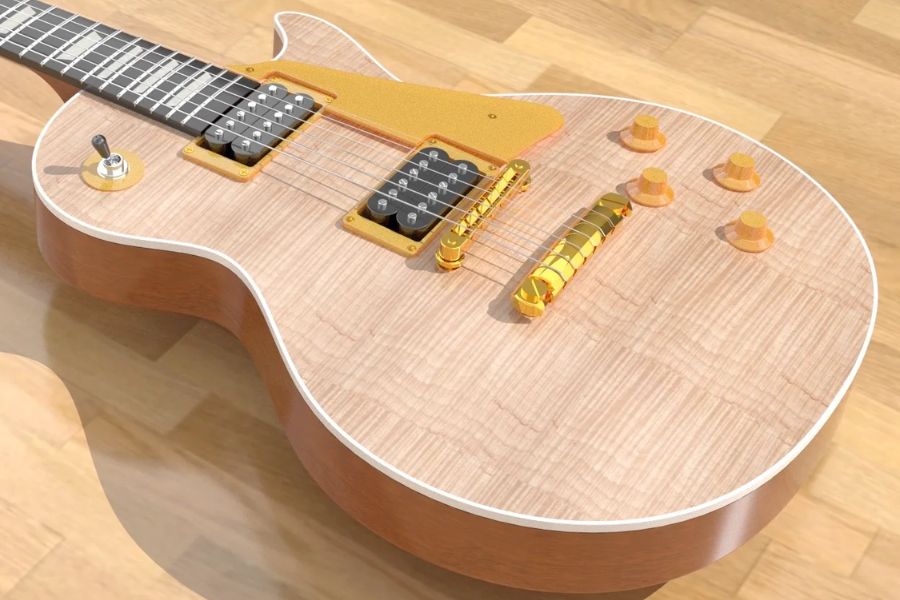
For our electric guitars, it is about lighter gauge steel strings. These make bending notes easier and playing smoother. The lighter tension changes the sound the pickups catch, making electric guitars sound sharp and clear.
Neck and Fretboard
Most acoustic guitars have wider necks. This can be tricky for beginners or those with smaller hands, especially with complex fingerpicking. Electric guitars often have narrower necks and fretboards. This makes it easier for you to play fast and fluidly. These design choices really influence the music styles we can play on each guitar.
The Need For Effect and Amplification
Here’s the thing: I can play my acoustic guitar anywhere, right out of the case. It’s perfect for simple, soulful tunes. Electric guitars, though, need a bit of help from amps and pedals to shine. But with that help, they can produce any sound I imagine. Whether you’re drawn to the authentic vibe of an acoustic or the electrifying energy of an electric, there’s a guitar out there that’s perfect for you.
Music Genres
You should choose a guitar that matches the music you’re passionate about. Whether you’re into soothing melodies or electrifying solos, the way your guitar is built plays a huge role. Acoustic guitars deliver warm, natural vibes perfect for cozy tunes.
On the flip side, electric guitars are your go-to for experimenting with awesome sound effects. They’re amazing for rocking hard or adding some jazz flair to your songs.
Let’s dive into the genres that resonate with each type of guitar:
Acoustic Guitar
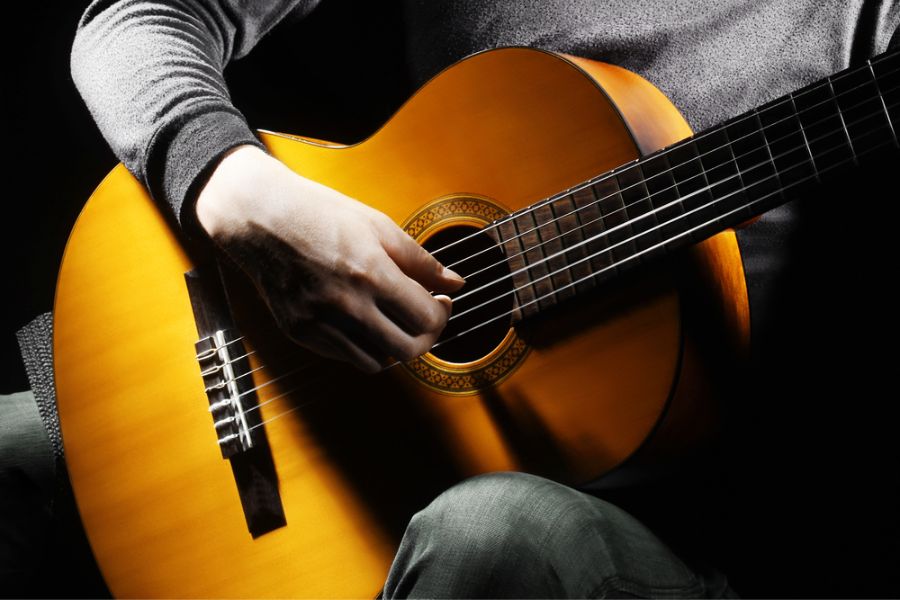
- Singer-songwriter/Pop: My acoustic guitar feels like a trusty companion for those intimate songwriting sessions. Its construction brings out clear, warm tones that pair beautifully with vocals, making it ideal for storytelling in pop music.
- Folk Music: Holding my acoustic guitar, I can almost feel the deep connections to folk’s earthy roots.
- Country: For country tunes, acoustic is my go-to. It’s crafted to support the narrative heart of country music, whether I’m strumming chords or picking out melodies.
- Bluegrass: In bluegrass, my acoustic guitar shines with its vibrant, lively sound. Quick pickings and complex rhythms come naturally.
- Flamenco: My flamenco guitar, a special kind of acoustic, is designed for those sharp, percussive sounds. It’s lighter and perfect for flamenco’s fiery beats.
- Classical Guitar: With its nylon strings and wide, flat neck, classical guitar is tailor-made for intricate fingerstyle playing. It produces a delicate, nuanced sound that classical music demands.
Electric Guitar

- Rock: Electric guitars were born to rock. Paired with an amp, its solid body allows me to crank up the volume and distortion, making it a force to be reckoned with in rock music.
- Metal: When it comes to metal’s intense, heavy sounds, electric guitar is indispensable. Its design supports high-gain effects and lightning-fast solos without unwanted feedback. There are many chances to get great metal sound with your electric guitar with all the tips and tricks.
- Funk: Funk music loves the crisp, clean sounds you can get from an electric guitar. The way it’s made, especially with the single-coil pickups, gets the punchy rhythms and groovy chords that funk is known for.
- Jazz: Electric guitars, especially hollow or semi-hollow types, are very popular in jazz. They give jazz musicians a warm, smooth sound that they can shape for everything from easy songs to tricky leads.
- Blues: The electric guitar changes the blues in a new way. Its ability to hold notes and show subtle feelings gives your soulful blues songs more depth.
- Indie: Indie music thrives on the electric guitar’s versatility. Its design lets you play a lot of different sounds, from clean, jangly chords to fuzzy, warped riffs, which fits the style of the genre.
What makes you want to play acoustic or electric relies on the song. Every kind of guitar gives you a lot of options for how to play, so you can find your own way.
Is It Harder To Play Acoustic Or Electric Guitar ?
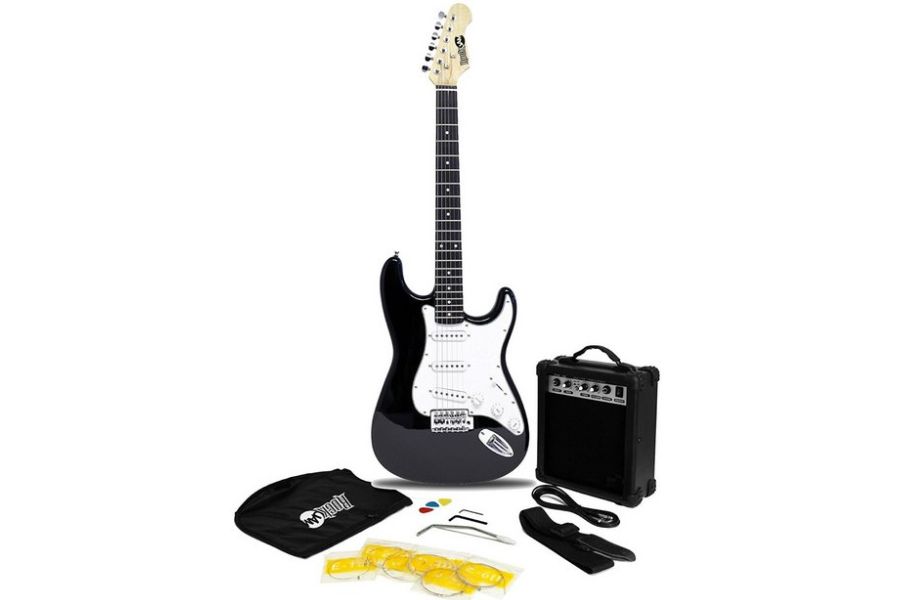
In my experience, playing an acoustic feels a bit tougher. My hand gets sore faster than when I play electric. But honestly, after lots of practice, both types feel much easier. If you’re dedicated to practicing, either guitar is a good choice.
On acoustic, the strings feel tighter, and the neck’s width means I have to stretch my fingers more. This can be tricky at first, especially if you’re just starting out.
My electric has lighter strings and a slimmer neck. This makes pressing down the strings and forming chords a breeze, even when playing fast.
Even though my electric might be easier on my fingers, getting the perfect sound can be complex. I have to play around with amps and effect pedals, which is a whole other skill.
Some people will love starting with an acoustic for its raw, natural sound. It’s all about mastering the basics. Others, including me, might lean towards an electric for its flexibility, especially if we’re into rock, metal, or jazz.
Can An Electric Guitar Sound The Same As Acoustic?
If you’ve only got an electric guitar but sometimes crave that authentic acoustic sound, you might wonder if your electric can come close to that. Well, it’s not entirely out of reach.
An electric guitar can’t perfectly copy the natural sound of an acoustic because they’re built differently and make sound in different ways. But, thanks to tech advancements and guitar design innovations, you can get your electric guitar to sound a bit like an acoustic. Here’s how:
- Acoustic Simulators: You can use pedals and effects processors that simulate an acoustic guitar’s sound. These gadgets tweak your electric’s signal to copy the acoustic guitar’s tone. Still, if you’re all about that true acoustic vibe, this might not totally hit the mark for you.
- Hollow and Semi-Hollow Bodies: If your electric guitar has a hollow or semi-hollow body, you’re in luck. These guitars have a warmer, more resonant tone that gets closer to an acoustic sound. They can produce sound both acoustically and electrically, which is pretty cool.
- Piezoelectric Pickups: Some electric guitars come with piezoelectric pickups, and these are awesome for getting closer to an acoustic sound. They turn string vibrations into electrical signals in a way that picks up more of the acoustic sound qualities.
Even with these tools and guitar types, it’s tough to fully match an acoustic guitar’s resonance, warmth, and depth. That special acoustic sound comes from its build, how the whole body vibrates, and the air moving inside its hollow chamber, which is hard to completely mimic with electric guitar tech.
Conclusion
I love both acoustic and electric guitars that I’ve played. Every one of them has helped me find my voice in music in its own way. Acoustic is a good choice if you like the old-fashioned sound. Electric might be the best choice for you if you like to try out different sounds. But really, you can make great music with either guitar. Not liking one more than the other is not what makes them different. Which one works best with your music right now?









